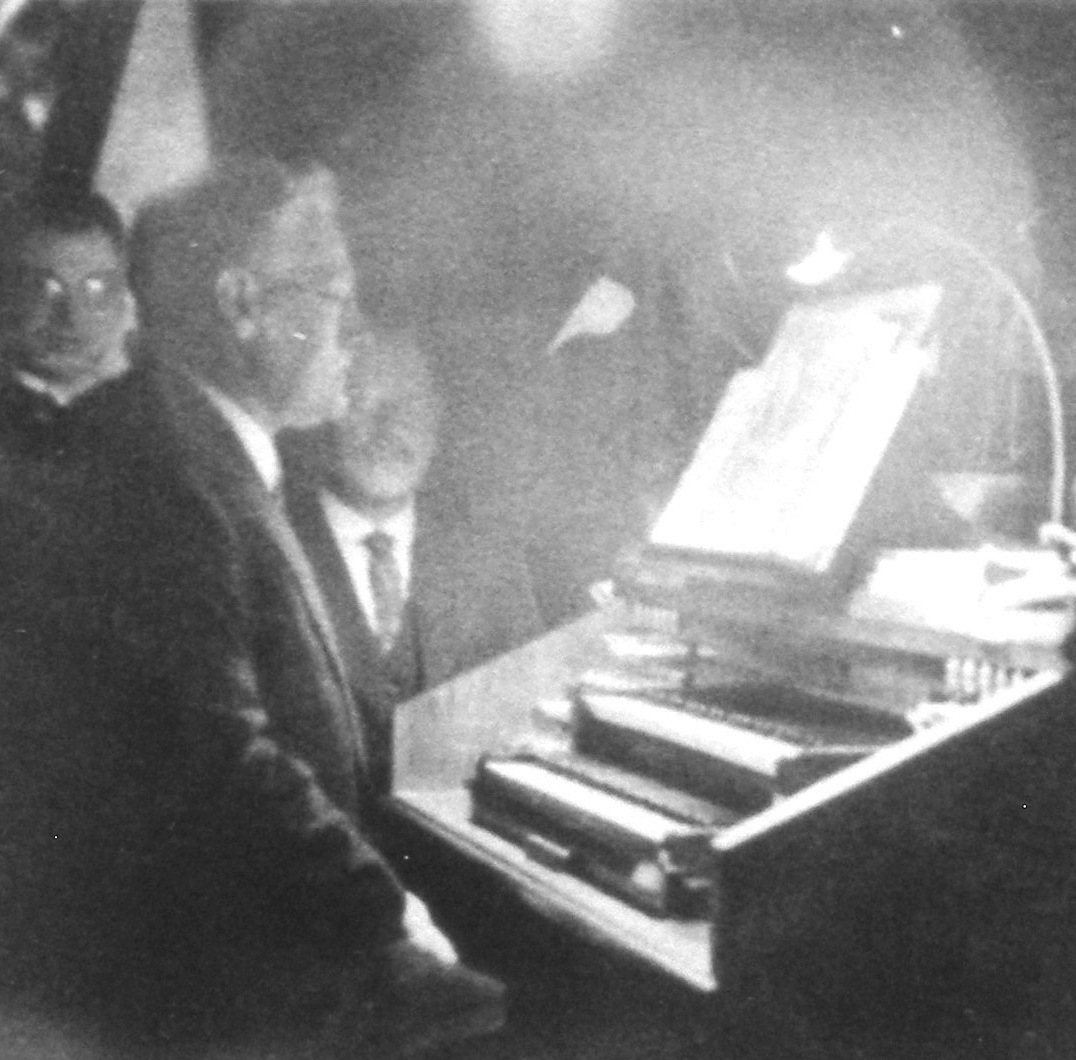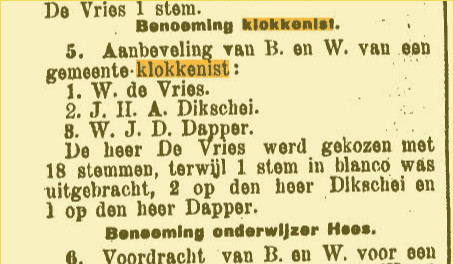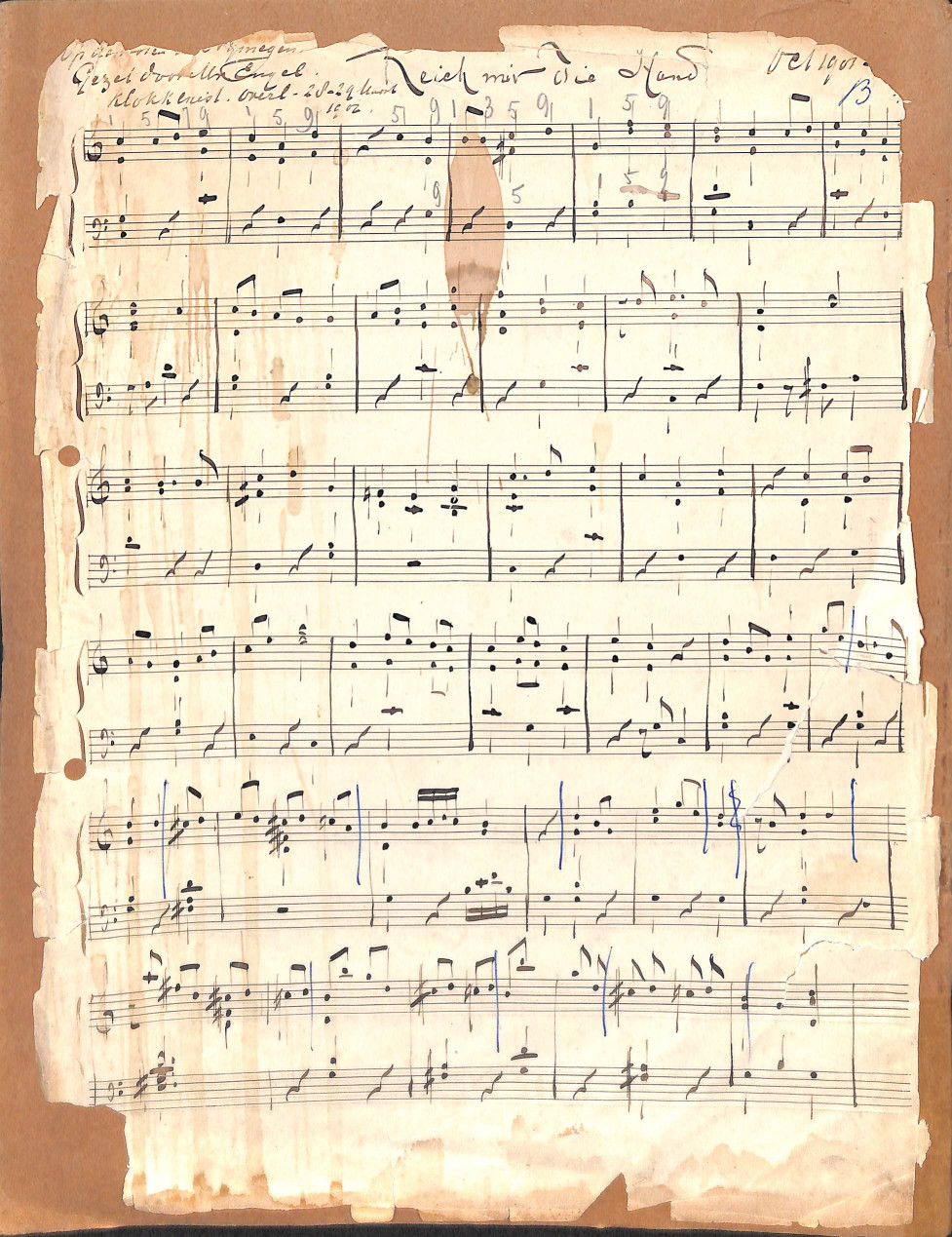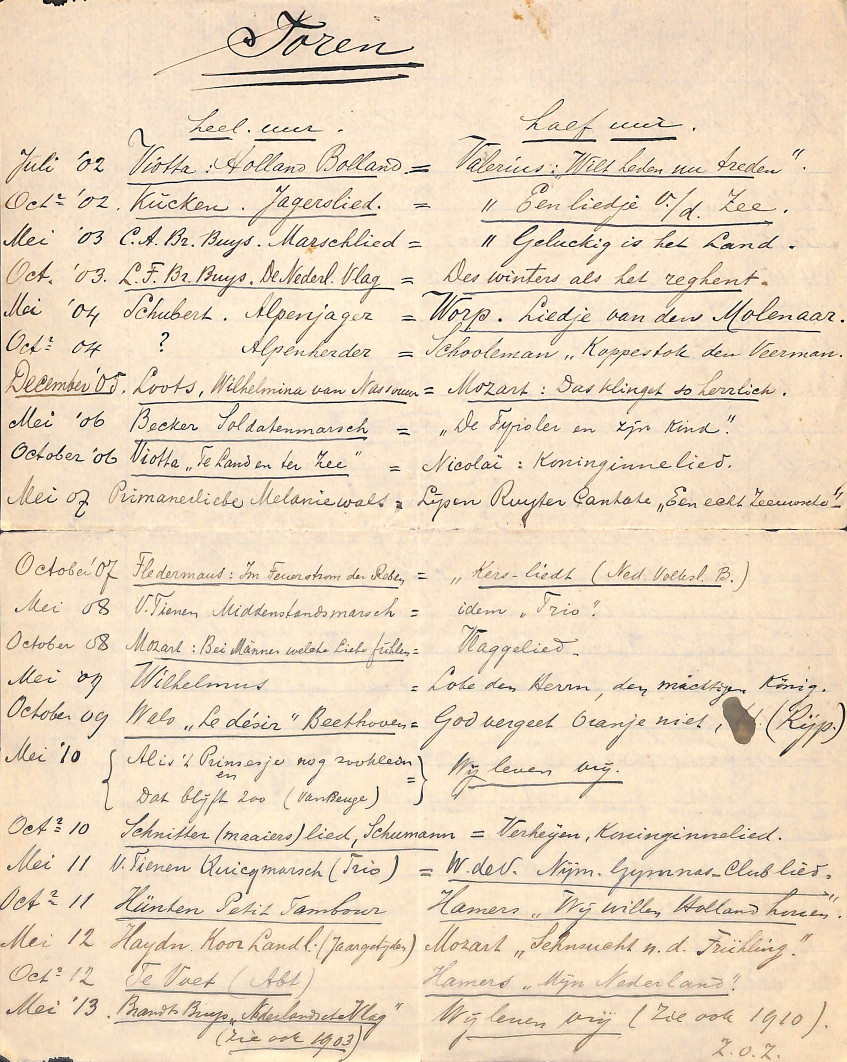Stichting De Traditie -
Cultural
Heritage



Nijmegen - Music
Around the St. Stephanus Church

Willem de Vries' life as an organist is described in detail in the Netherlands paper: Kler-H-de 1995. Willem de Vries (1871-1936). Nijmeegs Organist/Landelijk organisator. Het Orgel 91, 212-218 (courtesy by Dr. Matthijs B.H. Schilder, behavioural biologist and professional organist). Ref: Nijmegen intro.



Though Willem de Vries started his career in Nijmegen in 1897 as a temporary replacement of his brother-organist Hendrik (Kler-H-de 1995), the formal appointment as carillonneur followed only in 1902 (source: De Gelderlander 19020510).
The legacy of carillonneur Willem de Vries contains more hand writings and documents than the collection of organ pieces. Understandably, if one realizes that the hand writings and documents of organists usually are restricted to their compositions, organ lessons, and recital programmes.
The scores of organ pieces are usually available in print, whereas a professional organist does not need more for the accompaniment of church hymns than the cantus firmus, or a simple church book.
Improvisation and accompaniment of church singing is a regular component of the organist's profession. The carillonneur on the other hand meets different demands. There are not many sheets with ready to play music available and suitable. And also changing the tunes of the automated carillon ("drums") demands the necessary preparations. Even if we know less of Willem de Vries' life as carillonneur than of his life as organist, his manuscripts, which were handed over to his successor Arie Peters, are inspiring reading matter. Willem's career as carillonneur begins with an homage to his predecessor Engel, by writing down the score of the tune on the automated carillon: Reich mir die Hand. The handwriting is dated 1901, and also shows a note on Engel's demise on March 28-29, 1902. This document marks the beginning of his own administration.
The automated carillon is programmed to play different tunes at the hour and half-hourly The first programmed tune every hour was, from July 1902, Viotta: Holland Bolland. The half-hourly tune was Valerius: Wilt heden nu treden. The list with tunes is updated consequently through October 1935. The last tune, Kallenbach's vroolijke Jongen, is neatly noted in his administration booklet. Successor Arie Peters followed the example of his predecessor and also noted the the tunes from the drum of the automated carillon.


Willem de Vries' manuscripts have been scanned and filed into a repository today. We still investigate which archive will be most suitable for deposit of this particular collection. All in all, the scans cover 314 pages. The instructions for the carillonneur were printed earlier in the journal The Gelderlander (May 03, 1902), The scans have been filed provisionally as follows:
(# pages) Contents
(12} Notes on the carillon, Anno 1779
(03) Tunes on the drum 1901, i.m. Engel
(02) Instructions to the carillonneur 1902 (in Netherlands)
(88) Tunes on the drum 1903 ff.
(10) Tunes on the drum 1903 ff without dates
(12) Indications for tunes on the drum
(02) Tunes on the drum, cover
(10) List of music pieces for carillon
(15) Music booklet
(160) Carillon music, hand writings
20220809